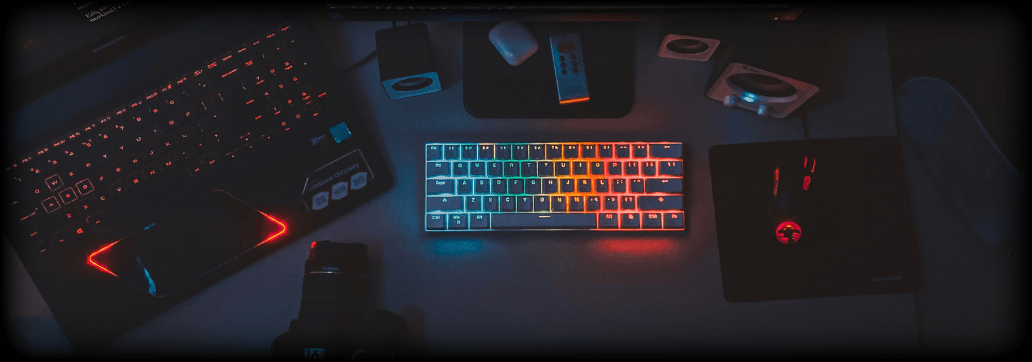Contents:
VNC, which stands for Virtual Network Computing, is one of several kinds of desktop remote sharing systems available for professionals but also for less tech-savvy home users as well. This specific solution is using Remote Frame Buffer protocol (RFB) to exchange graphical information and more, in order to operate another machine that is not on-premise.
VNC operates by transmitting graphical-screen updates from one computer to another via a network by delivering keyboard and mouse input from one machine to another.
The system has clients and servers available for Java but mostly for a variety of GUI-based operating systems. A VNC server may be accessed by several clients simultaneously. This technology is commonly used for remote technical help and accessing data on one’s work computer from one’s home computer, or the other way around.
VNC does not need the installation of software on the remote system, instead of relying on the transmission of keyboard and mouse events from the master computer, which is often on TCP ports 5900 or 5901.
What Is the RFB Protocol?
Remote Frame Buffer is first and foremost an open solution. This simple protocol allows interaction with remote computers in a familiar graphical interface. It is suitable for all windowing systems and applications since it operates at the frame buffer level, including Microsoft Windows, macOS, and the X Window System. RFB is a protocol that is used in Virtual Network Computing (VNC) and its variants.
How Does VNC Work?
A user can connect to a port on the server (default port: 5900), but a browser can also connect to the server using the default port: 5800.
A server can also connect to a viewer on port 5500 in “listening mode.” One advantage of listening mode is that the server-side does not need to set up its firewall to enable access on port 5900 (or 5800); this is handy if the server site lacks technical skills, and the viewer user is more educated.
The server provides the client with small rectangles of the frame buffer. Because the VNC protocol, in its most basic version, may consume a significant amount of bandwidth, many solutions, especially data encoding related, have been developed for reducing communication overhead.
VNC utilizes by default the 5900+N TCP port, where N is the display number (usually :0 for a physical display). Some variations of VNC will also initiate a basic HHTP Server just to provide a VNC viewer as a Java Applet; of course, this facilitates access via any java-enabled web browser.
Different port allocations are permissible as long as both the client and the server are properly configured. There is also an HTML5 VNC client solution for current browsers (no plugins necessary).
When a client and a server create a connection for the first time, the server requests authentication from the client using a challenge-response system, which often results in the user being required for a password at the client end.
The server and client then communicate to agree on the desktop size, pixel format, and encoding techniques to be used. The client then asks for the full screen to be updated, and the session begins. Because the client is stateless, either party can terminate the connection at any moment with no repercussions.
VNC Client
The VNC client could be more adequately called a viewer with some control actions available and that is working over TCP/IP protocol. The client does need a reliable and sustained data transmission and the mentioned method of showing pixels (via a windowing system or using frame buffering).
VNC Servers
Writing a VNC server is more difficult than writing a client since the protocol is meant to make the client as simple as possible, therefore any necessary translations are normally performed by the server. For example, the server must supply pixel data in the format requested by the client. We have servers for both of our primary platforms, X (Unix) and Windows NT/95.
A Unix workstation may run many Xvnc servers for various users, each representing a unique VNC desktop. Each VNC desktop is similar to a virtual X display, with a root window that may be used to show several X programs.
The Windows server (WinVNC) is a little more complex to build since there are fewer locations to introduce hooks into the system to monitor display changes, and the paradigm of multiuser operation is less well-defined.
VNC and RDP Similarities and Differences
The VNC protocol and RDP, Microsoft’s Remote Desktop Protocol, have a few similarities like:
- The ability to provide remote desktop access for quick and easy troubleshooting and remote working.
- They require the client-side and server-side software to communicate.
- Both employ direct peer-to-peer communication.
- Both support software for user management and safe access.
When it comes to the differences between the VNC and RDP, a few examples come to mind:
- RDP has restricted platform capabilities, but VNC is compatible with a variety of operating systems.
- RDP has the potential to be faster than VNC.
- VNC is able to connect to the machine directly, whereas RDP connects to a shared server.
Heimdal™ Remote Desktop, the Solution that Helps Support Users Anywhere in the World
Connect with your staff and customers across several devices with ease, using a secure, ready-to-use, and compliant solution.
Agent-to-agent, dashboard-to-agent, and agent-to-no-agent communication are all supported by Heimdal™ Remote Desktop.
Enjoy Heimdal™’s Remote Desktop solution, the integrative approach to remote access & control made to empower your support crew to achieve more in less time and from a single application.
Heimdal® Remote Desktop Software
If you liked this article follow us on LinkedIn, Twitter, YouTube, Facebook, and Instagram to keep up to date with everything cybersecurity.










 Network Security
Network Security
 Vulnerability Management
Vulnerability Management
 Privileged Access Management
Privileged Access Management  Endpoint Security
Endpoint Security
 Threat Hunting
Threat Hunting
 Unified Endpoint Management
Unified Endpoint Management
 Email & Collaboration Security
Email & Collaboration Security









